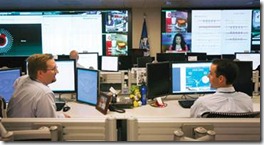Just last week the Pentagon announced that over 24,000 files were stolen from a defense contractor, making this particular breach one of the most significant cyber attacks on the U.S. military to date. In this same article, Defense Secretary Leon Panetta said that over 60,000 “new malicious software programs or variations are identified every day threatening our security, our economy and our citizens.” Dell’s own Counter Threat Unit (CTU) housed within Dell SecureWorks processes more than 13 billion security events a day and sees more than 30,000 specimen of malware a day. Security threats are almost literally everywhere, but sometimes system vulnerabilities can be found at even the most basic level.
BIOS software enables some of the most basic PC functions through its unique and privileged position within the PC architecture. From loading and starting an operating system or setting-up hardware, the functions this software supports are basic but also fundamental to the operation of any system, making them both very easy to secure, but also very vulnerable to attack. This is one of the reasons the National Institute of Standards and Technology (NIST) specification for BIOS Protection Guidelines known as Special Publication 800-147 outlining its new BIOS protection guidelines. In essence, the new guidelines are designed to prevent unauthorized modifications of BIOS firmware on PC client systems, which will mitigate a potentially significant threat. This is where Dell comes in.
Once these guidelines were published in April, we at Dell worked quickly to ensure our government customers could count on having their needs met quickly and efficiently. Through this tireless work on behalf of our government customers, we are currently the only IT supplier that can offer systems that meet the new NIST BIOS Protection Guidelines across the spectrum of PC solutions. Dell’s full line of business and government-class PCs – specifically Dell’s Precision, OptiPlex and Latitude solutions – meet the new NIST specification for BIOS Protection Guidelines right out of the box. This is the type of customer service we’re constantly working to achieve – not only meeting needs, but meeting them rapidly. In today’s environment, as much as we are depending on our IT systems and the vast ecosystem of threats we face each day, this becomes crucial. Making sure we stay a step ahead of the threats and assisting customers to secure their IT systems and environments will be a key component to offering any of our customers the type of IT systems and solutions they need and deserve.
